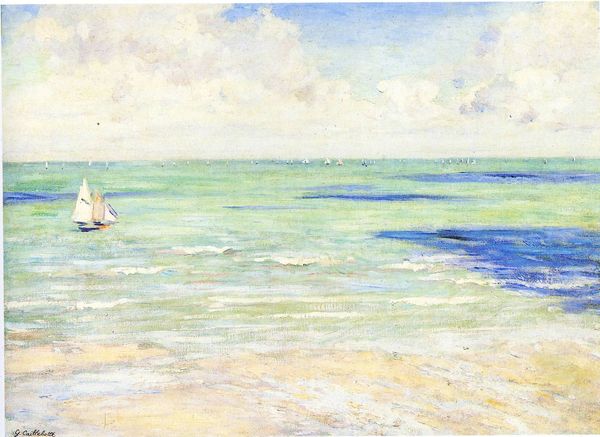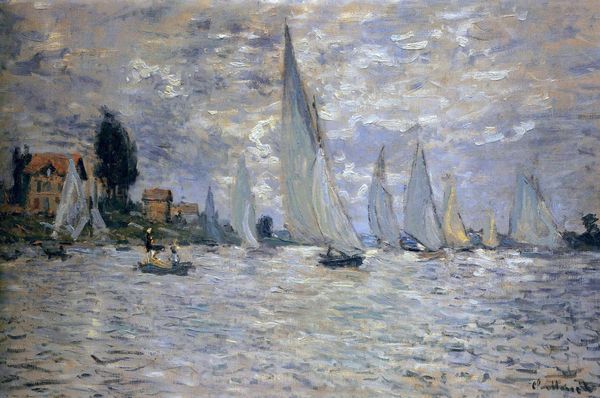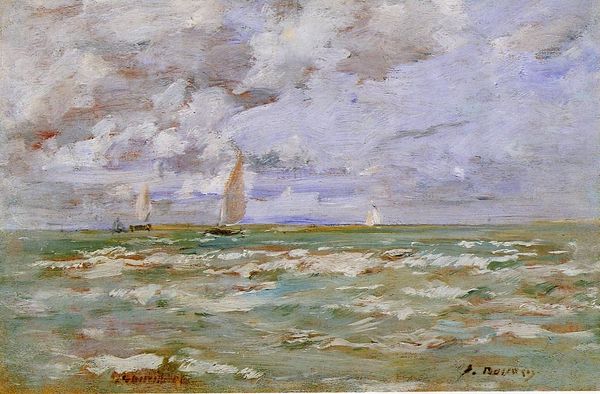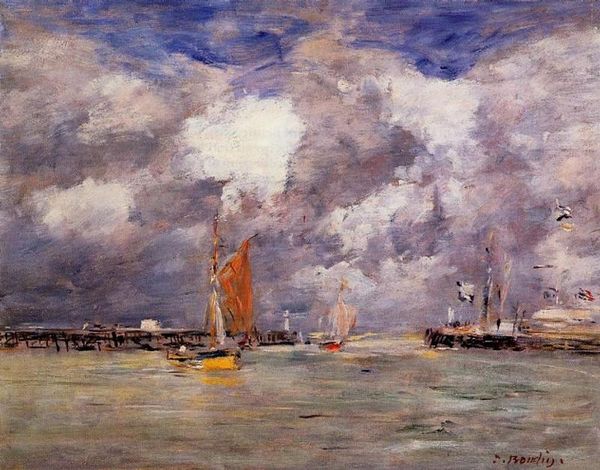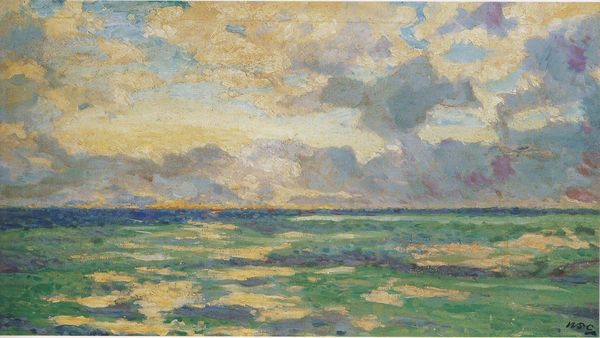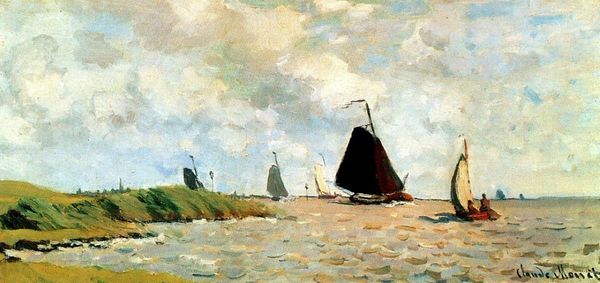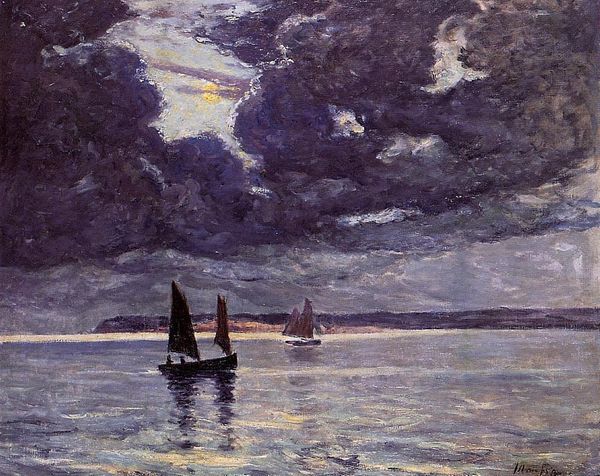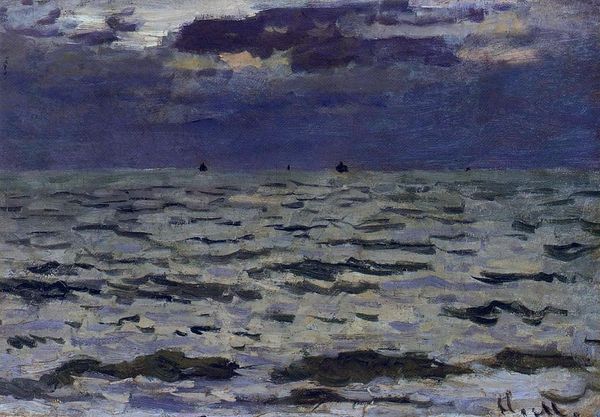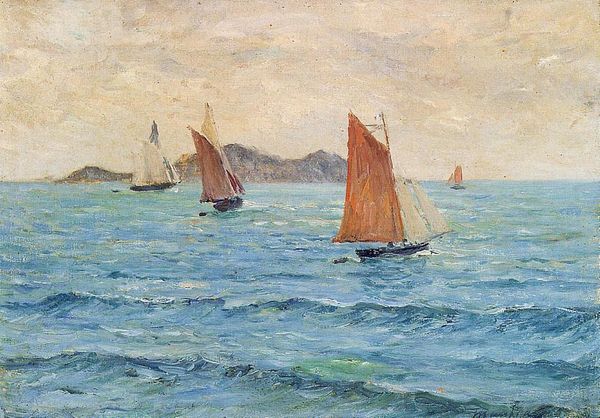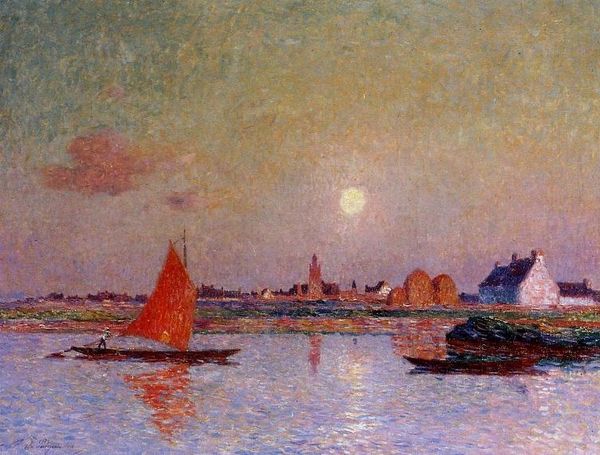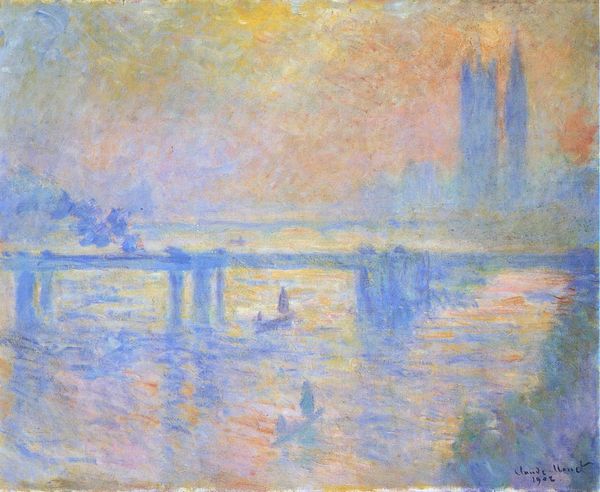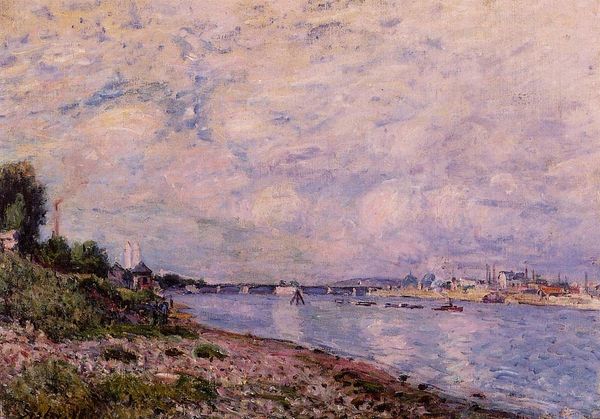
plein-air, oil-paint
#
sky
#
impressionism
#
plein-air
#
oil-paint
#
landscape
#
impressionist landscape
#
oil painting
#
water
#
sea
Copyright: Public domain
This is Claude Monet’s "The Sea at Pourville," an oil on canvas. The painting is dominated by horizontal bands of color and light. The sky and sea meet in a hazy horizon line, creating a sense of expansive space. The materiality of the paint is evident in the broken brushstrokes, which give the scene an ephemeral quality. Monet’s emphasis on capturing fleeting moments aligns with the Impressionist movement’s focus on subjective perception. Rather than depicting a scene with photographic accuracy, Monet sought to capture the sensory experience of being in nature. The semiotic significance of the sea here operates on many levels: the boats suggest man's ability to traverse distances, while the sea, in all of its immensity, is indifferent to human endeavor. The texture of the visible brushstrokes and the atmospheric perspective function not just aesthetically but also as part of a philosophical discourse about the nature of perception and reality. The work reflects a shift towards valuing subjective experience and impermanence. By focusing on the transient qualities of light and atmosphere, Monet challenges fixed meanings and invites ongoing interpretation.
Comments
No comments
Be the first to comment and join the conversation on the ultimate creative platform.
